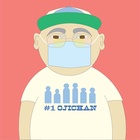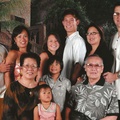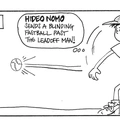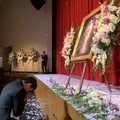Little Tokyo and yearning for meaning and hope in the power of place.
A bird taking flight.
Little Tokyo is a small neighborhood of artists and activists, of commerce and spirituality, of parades and protests, densely layered by its long history and its proximity to the seats of power.
And so, in early June, Nihonmachi, wounded by a week of turbulence and tumult that has shaken an entire nation, took to the task of rebuilding and reforming a community. Summoning up, once again, those reserves of resiliency that have served the Japanese American community for so many generations.
Individuals, each in their own way, saw to the task.
At Higashi Honganji Buddhist Temple on Third Street, Rev. Duncan Ryuken Williams led the Buddhist clergy in a ceremony livestreamed as part of Tsuru for Solidarity. The temple has been closed since March due to COVID-19, but opened its doors for the occasion.
This past weekend was to be a time to gather in Washington, D.C., but like so many things, the ceremony was altered to conform to today’s reality. The hondo was empty but for a couple of us, including Evan Kodani, who has become the videographer of this moment.
It was no less moving.
Williams and Rev. Wendy Egyoko Nakao hung delicate strings of origami cranes at the altar as Rev. William Briones, Rev. Nori Ito and Rev. Shumyo Kojima chanted.
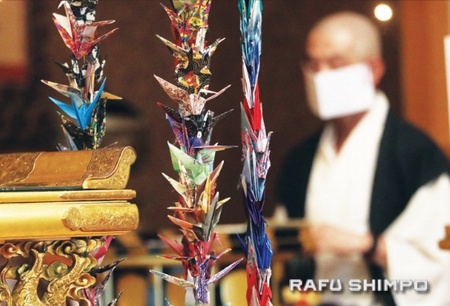
Clad in a simple cloth mask, Williams said: “In the Buddhist tradition, we say that liberation is like a bird taking flight. With one wing of wisdom – the ability to see things clearly – and the other wing, the wing of compassion – the ability to feel the suffering of others as our own.
“We can’t fly to freedom if BOTH wings are not activated.”
The Buddhist leaders lifted the names of those hurt by racism and violence to draw connections between the past and what is happening in the present. In their words, they remembered and honored George Floyd, Ahmaud Arbery and Breonna Taylor, killed by police, and also Ronal Umaña and Johanna Medina Léon, who died in ICE detention. Williams recalled the names of Jungo Kino, Hirota Isomura and James Hatsuaki Wakasa, killed in racial violence during World War II, as well as Bawi Cung, a Burmese American father attacked and stabbed in a Sam’s Club in Midland, Texas by a man claiming that Chinese-looking people were spreading COVID-19.
At that same time, muralists gathered to beautify the wooden boards placed on the storefronts of Little Tokyo and through their art, uplift the community.
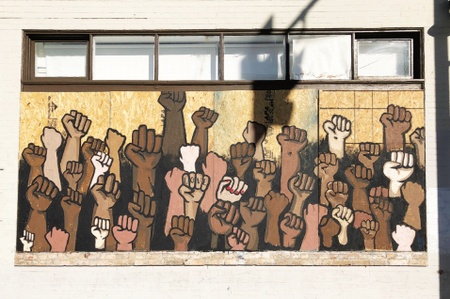
“If we sort of beautify these planks, beautify these small businesses during this time and promote the right messages through what we’re able to show, then we could ideally do multiple things at once,” said artist Kent Yoshimura.
Yoshimura and a team of artists were determined to create art from chaos. He explained that rather than march through the streets, his activism manifests through brushes and paint. Yoshimura was joined on the street art project by Paul Juno, Rooster, Laura Weinberger, Marilee Spencer, Danny Amoros and Steph Ramirez.
Like at Higashi Honganji, technology is a common thread, connecting people, in this case, via a Slack channel dedicated to small businesses in Little Tokyo. Folks like Brian Kito, Mariko Lochridge and James Choi, who have been on the frontlines of supporting Little Tokyo over the past months, were there to lend their support by connecting the artists to business owners.
Last year, Yoshimura painted the Through the Blossoms on the two-story building overlooking Frances Hashimoto Plaza.
Outside on Second Street, three delicate golden finches took flight at RIF-LA, where storeowner Jeff Malabanan has vowed to rebuild and has also stood in solidarity with those protesting police brutality. The finches are a subtle dig at Amy Cooper, the white woman who called the police on a black bird-watcher in Central Park, NYC.
Across the street, Nina Simone, in a twilight palette of violets and indigo, graces the storefront of Markks Shoe Boutique. Simone was a civil rights activist who used her remarkable talent to convey rage at racism in songs like Missisippi Goddam and Backlash Blues, written with poet Langston Hughes.

On First and San Pedro streets, not far from where Charlie Parker and Miles Davis once played when the neighborhood was Bronzeville, the muralists painted a Lady of the Angels as a black woman. Her six arms outstretched representing the pillars of society: education, progress, pride, arts, unity and love.
With City Hall looming, the artists chose San Pedro Street, across from Toriumi Plaza, where the National Guard staged, for a mural of raised fists of different colors.
“As a communal piece, the fists were probably the one piece that the most people worked on. Because there were probably about 30 people just off the streets, protesters who came by and decided to paint their own fist in their own style. Every single fist on there is a different artist in a different style. And then we went in and cleaned it up and, you know, painted it so it didn’t look crazy,” Yoshimura said.
Global pandemic, quarantine, economic decline, social unrest —it all seemed to erupt at once. In uncertain times we yearn for meaning, clarity and hope. For one weekend, Little Tokyo found its message in chants, and bells, paint and brushes, perhaps best summed up by Rev. Williams.
“This journey of freedom is not without pitfalls. When we inevitably stray from the path, let us recall the words attributed to Daruma Daishi (Bodhidharma) ‘Nana Korobi Ya Oki’ in the Japanese – ‘Seven Times Fall Down, Eight Times Get Up.’ When we stumble – we get back up. A million times falling down, a million and one times we rise back up.
“Today the Tsuru are Rising – The Paper Cranes Fly.”
* This article was originally published in The Rafu Shimpo on June 15, 2020.
© 2020 Gwen Muranaka



